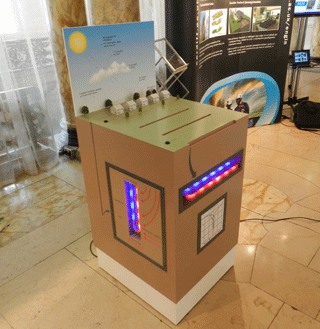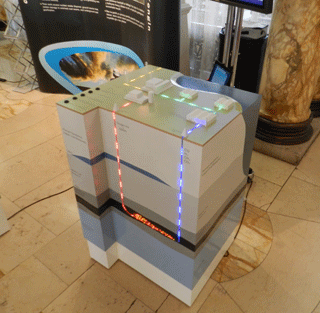“Drivetrain” for wind turbine – Scale 1:20


A “Drivetrain”, in case you were wondering, is the component that harnesses the power from the revolving blades of a wind turbine – it’s the machinery the blades are connected to at the top of the tower, normally hidden under a cowling. This particular model was commissioned for use as an eye catching display at trade shows and exhibitions. It was designed to illustrate the flexible, modular nature of the client’s product which could be easily adapted for different types of wind turbine. Taking the real thing along wasn’t really an option due to its massive size and weight. If you click on the images to enlarge them, you’ll see the outline of a standing figure which gives a sense of the machine’s real life dimensions. At 1:20 scale we were able to show a plenty of realistic detail, including individual nuts and bolts and the huge single disc brake with four callipers on the back face of the model.
Detailed Marketing model – Scale 1:150


When space in a sales office is limited, 1:150 is a useful scale option because it is small enough to keep the model compact but large enough to show plenty of detail, which helps bring the model to life. This model was only 450mm square but if you look closely at the enlarged images you’ll see we’ve actually been able to show the wooden handrails on the balcony balustrades. This type of detail invites the viewer to inspect the model up close and allows them to visualize themselves enjoying the sea view from what could be their apartment balcony. All of which builds confidence and can help secure early sales, even when the site outside is little more than a hole in the ground.
Five models reflecting Atkins involvement in the London Olympic Park





Designed and built for Atkins Engineers, this group of five interactive models was commissioned to reflect Atkins' huge involvement in the construction of the London Olympic Park. Each model highlights a particular aspect of the unglamorous but essential engineering work Atkins carried out at the site, from creating an artificial level surface for the equestrian event, to installing fundamental infrastructure such as bridges, water supplies and drainage. One of the models, which incorporates scrolling LED messages and allows the operator to lift a table tennis ball into the air by controlling a fan, conveys how Atkins designed complex climate control systems to "engineer" the air in many of the park's specialist sporting venues. The models were used initially at an exhibition event linked with the start of the Olympics but will subsequently be displayed in the reception areas of Atkins' main offices around the UK. There is also a plan to export one of the models to the Middle East. .
Contoured model with interactive back projection


We designed and built this topographical model for display at a Royal Academy of Engineering exhibition. The model had to incorporate an acrylic “sea level” panel suitable for back-projection of computer modelled animations showing currents, tidal flows, sediment deposits, etc. It was a technically demanding project because we had to make sure the back projected animation fitted perfectly within the outline of the coast. The vertical scale was exaggerated to accentuate the distinctive character of the South Wales Valleys.
Four models with interactive lighting features





This group of models was commissioned by the Cardiff University School of Engineering for their stand at the Royal Academy of Engineering Summer Soiree. The models were used to highlight the university’s extensive research in the field of geo-engineering (underground engineering), covering areas such as nuclear waste containment, ground source heating and other underground activities. The models represent cut-away views of the earth’s strata, using different coloured LEDs to illustrate the various processes happening in the layers of rock and sediments. The lights, which were activated by labelled buttons on top of the models, had to recreate several different effects, including linear flows, pulsing, slow fades, changing colours, random flashing, and some complex, timed sequences.